This past summer, as I was returning from kayaking to the public ramp at Port Hadlock, Washington, I saw a friend of mine who was studying at the Northwest School of Wooden Boatbuilding (NSWB), which is situated right next to the ramp. He told me that I should see a boat that had just been put up for sale by the school. I wandered over to the boat, which was sitting on a trailer: it was a piece of Maine, a John Gardner-designed Down East Workboat. Just three years before, I had moved from coastal Maine to the Pacific Northwest, so I well knew the boat and its traditional hull shape. I had been looking for a small motor launch ever since moving to this northern area of Puget Sound, and here was, to my mind, the perfect boat for my needs and certainly a practical boat for anyone wanting a solid and seaworthy small boat for coastal waters.
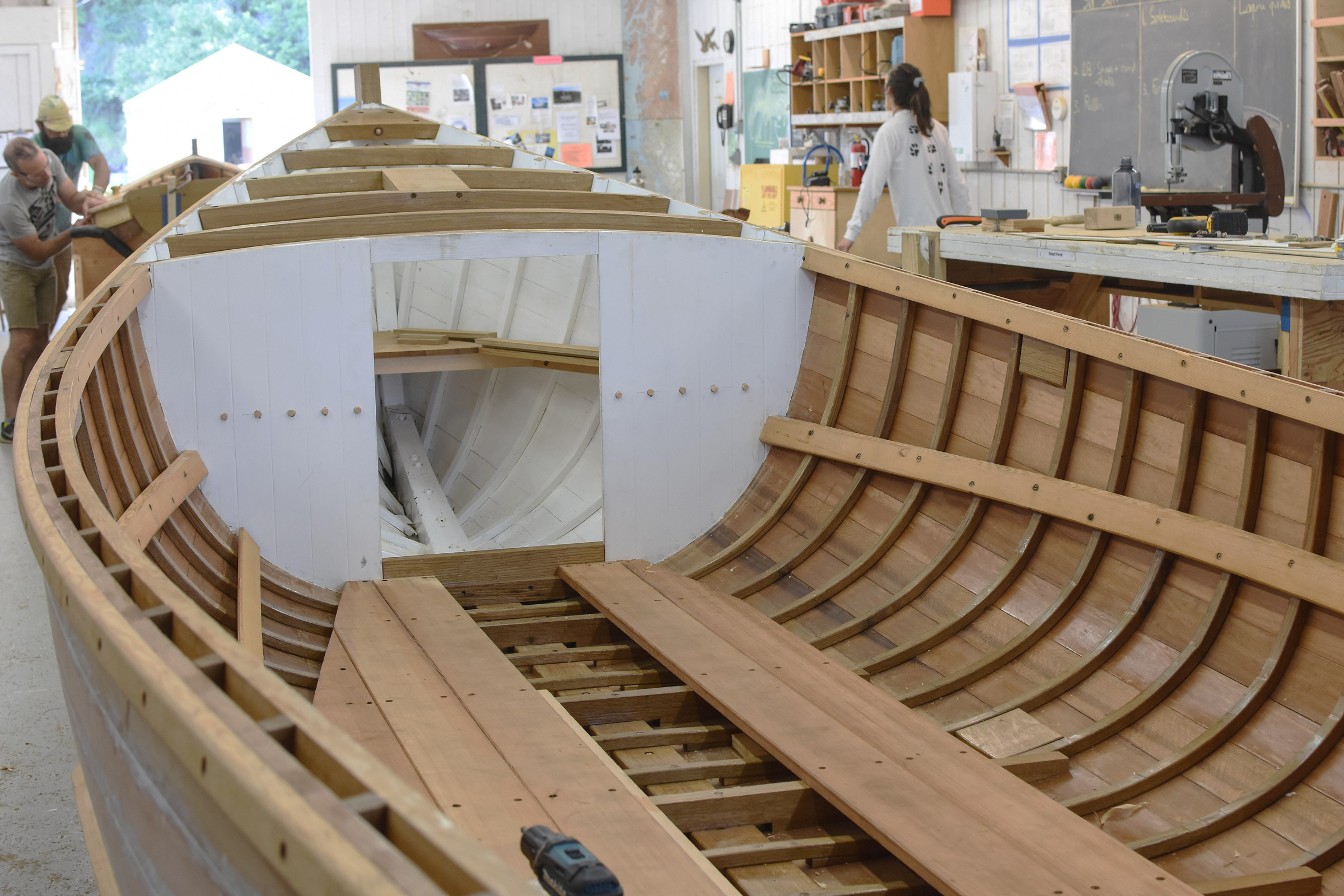 E. T. Becker/Northwest School of Wooden Boatbuilding
E. T. Becker/Northwest School of Wooden BoatbuildingThe original workboat had unusual frames 5/8″ thick and 1-3/4″ wide, proportions that gave them the look of canoe frames, and the planks were fastened with clench nails, just as canoe planks are. The steam-bent frames in the new construction have a squarer cross section and provide sufficient thickness for the screws holding the planking.
Working boats with this hull shape have plied the coastal waters of Maine for over a century. This Gardner version is 18′ in length, but stretch it out a bit and it becomes a Pulsifer Hampton 22 center-console inboard. Stretch it out a bit further to 20′ or 30′ or more, put a cabin and pilothouse on, and you have the iconic Maine lobsterboat. This hull design has evolved over the years in the Maine waters and boatshops to handle highly variable and oftentimes challenging coastal conditions, so I knew that it would be just right for Puget Sound. If you’ve ever seen a lobsterboat race, when heavy workboats can be moving at over 50 knots, you know that this is a capable design! Needless to say, I soon bought the NSWB boat. I named her MOON LADY, an English translation of my mother’s Chinese name, and to follow the Maine tradition of naming working boats after wives, mothers, sweethearts, and daughters.
Gardner drew the design in 1981, basing it on old photographs and measurements of an 18′ workboat from Washington County, Maine. He described the design as a double wedge, the first wedge being the sharp high bow and the second a wedge turned flat for the stern. This creates a practical workboat that has a foundation of a broad stern set firmly in the water to support the weight of a powerful outboard for speed, along with a sharp entry and planing hull for maneuvering easily through chop and messy currents. Its 18′ length and 6′ 4″ beam help make the boat seaworthy for coastal waters and give it plenty of open work space. Gardner describes the build in detail in Chapter 7 of the second volume of his Building Classic Small Craft.
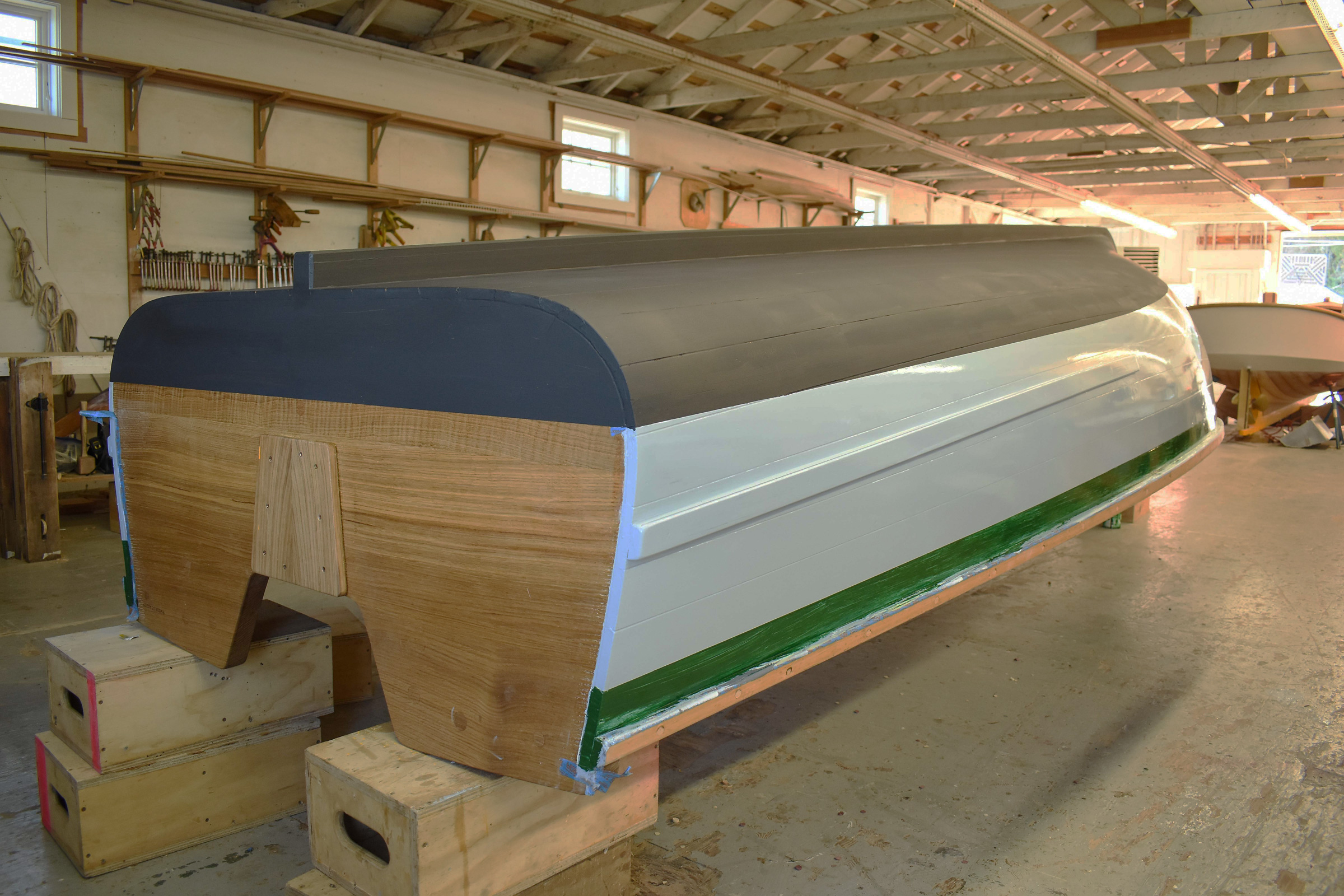 E. T. Becker/Northwest School of Wooden Boatbuilding
E. T. Becker/Northwest School of Wooden BoatbuildingThe full-length keel provides good tracking without impairing the boat’s ability to turn smartly.
The boat here, built by instructor Jody Boyle and his students at the NSWB, was constructed directly from Gardner’s instructions with few changes made to the design. It was lofted from his lines drawings and offset tables, then built upside down, with carvel-planked 5/8″ red cedar on flat, white-oak canoe frames 5/8” x 1-3/4″ on 8″ centers, as often used on the Washington County workboat. Gardner suggests that thicker, more typical frame stock could be used, and notes as well that the boat could be built lapstrake.
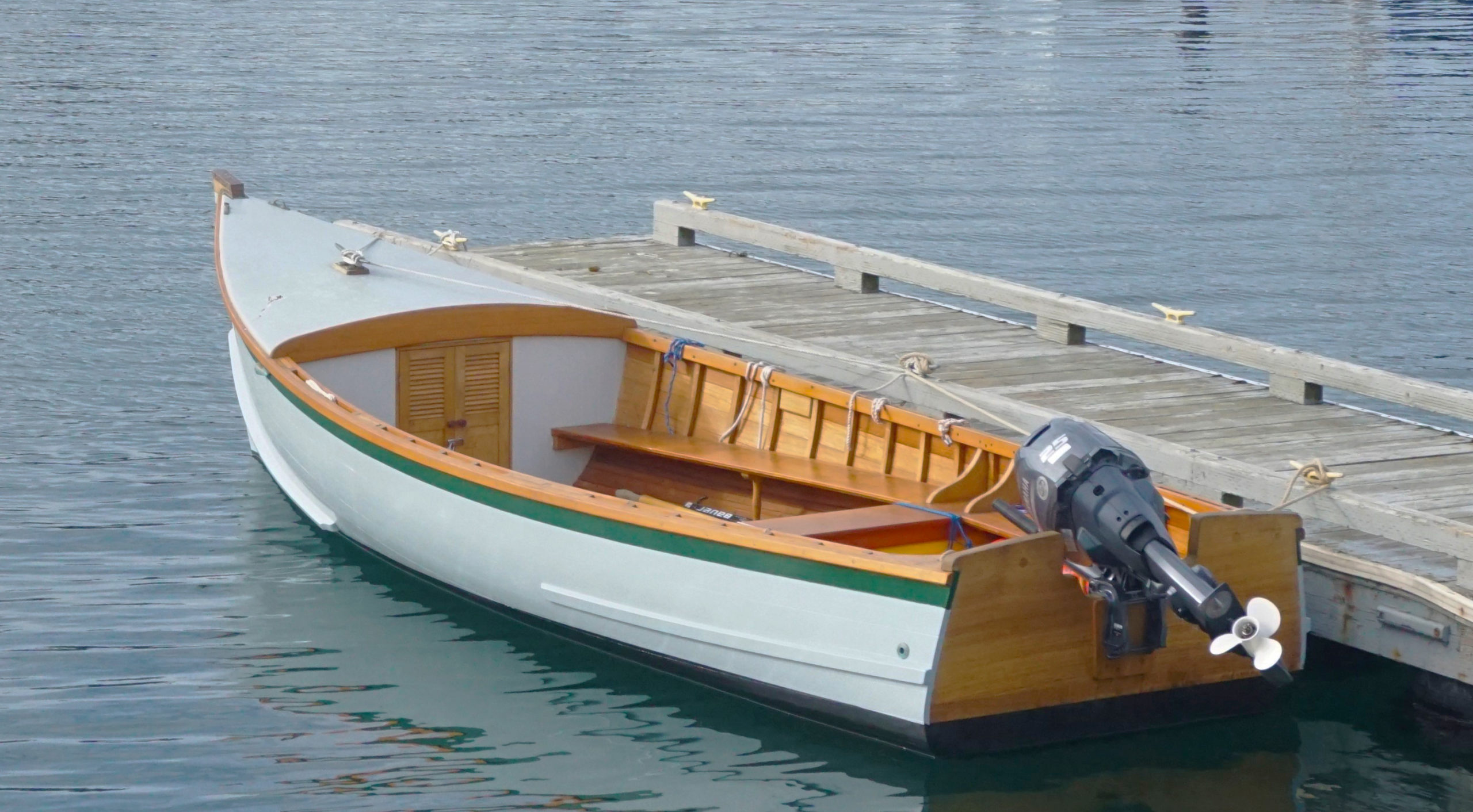 Denis Wang
Denis WangGardner’s plans do not include details for the interior outfitting. The new boat was given side benches from transom to forward bulkhead and a single thwart well aft of amidships.
While MOON LADY has a white-oak transom, which was Gardner’s preferred transom wood, it is 1/4″ thicker than the 1-1/2″ stock he listed. The stouter transom does well supporting my heavier, four-stroke outboard motor or, for that matter, any of today’s more powerful outboards. The transom also has large quarter knees as well as a keel knee.
Instead of the 3/8″ plywood specified by Gardner for the foredeck, MOON LADY has tongue-and-groove cedar planks covered in Irish felt and painted canvas. The same cedar planks replaced the 1/2″ plywood indicated for the forward bulkhead. All the interior wood is oiled and there are no varnished surfaces, whereas most traditional Maine workboats are painted. For safety and security, Gardner specified a removable watertight panel for access to the bow compartment, but this build has louvered frame-and-panel doors instead, which help to air out the enclosed space. Gardner’s book had no information on seating arrangements beyond a pine 7/8″ x 10″ thwart at station 6, so Jody created a layout consisting of a single thwart with side benches on both sides running the full length of the cockpit. The plans call for 5/8″ pine floorboards with the center one removable to provide access for bailing, and a ceiling of pine or cedar from the floorboards to the risers.
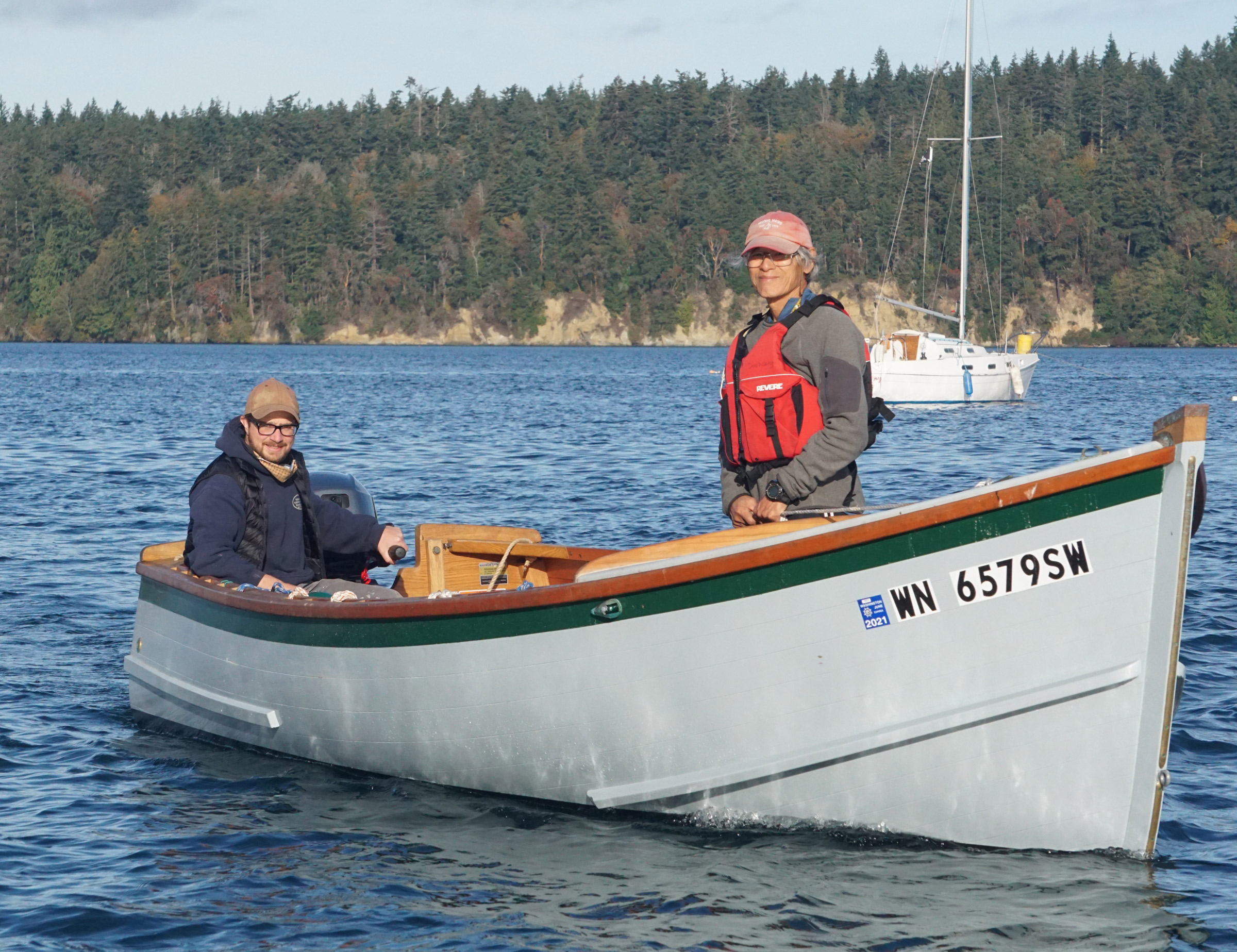 Denis Wang
Denis WangThe rubbing strip on the stern was part of the boat documented by Gardner; the spray rail forward was an addition made to the new boat after sea trials.
This Down East Workboat is Coast Guard rated for six passengers and a 45-hp outboard, but I’m using a 2020 25-hp, four-stroke Yamaha. With this engine, the boat planes easily at 12 knots at one-third throttle and has a top speed over calm water of 15 knots. As I had expected, the boat is adequately seaworthy for a traditional skiff designed for coastal waters. In chop and small waves, the boat holds its line very well due to its full-length keel yet can turn smoothly and sharply as needed with a high degree of primary and secondary stability due to the broad tumblehome stern. Spray over the bow isn’t a problem except when plowing at speed through steep chop or boat wakes and, even then, is only a light spray. The boat can hold the full capacity of six persons in comfort and with plenty of extra space for gear. I’ve also outfitted the open section with four large, inflatable beach rollers secured under the side benches for flotation. The ample storage compartment under the foredeck holds much of the gear needed on a small cruising boat: extra lines, anchor, flotation, fire extinguisher, manual pump, portable toilet, tools, cushions, and life jackets. A 12V battery for navigation lights and two small bilge pumps are secured in the bow compartment to help keep the bow down by countering the weight of the motor, gas tank, and skipper in the stern. One of the modifications I made is adding oarlocks for emergency rowing capability.
As one can imagine for a boat of this size, it is easily moved on the road with a 1,000-lb load of both boat and trailer. I keep the outboard in place during towing and in its nearly fully lowered (third notch) position without bracing and for good clearance above the road. I and one other person easily launch or load the boat on its EZ Loader trailer.
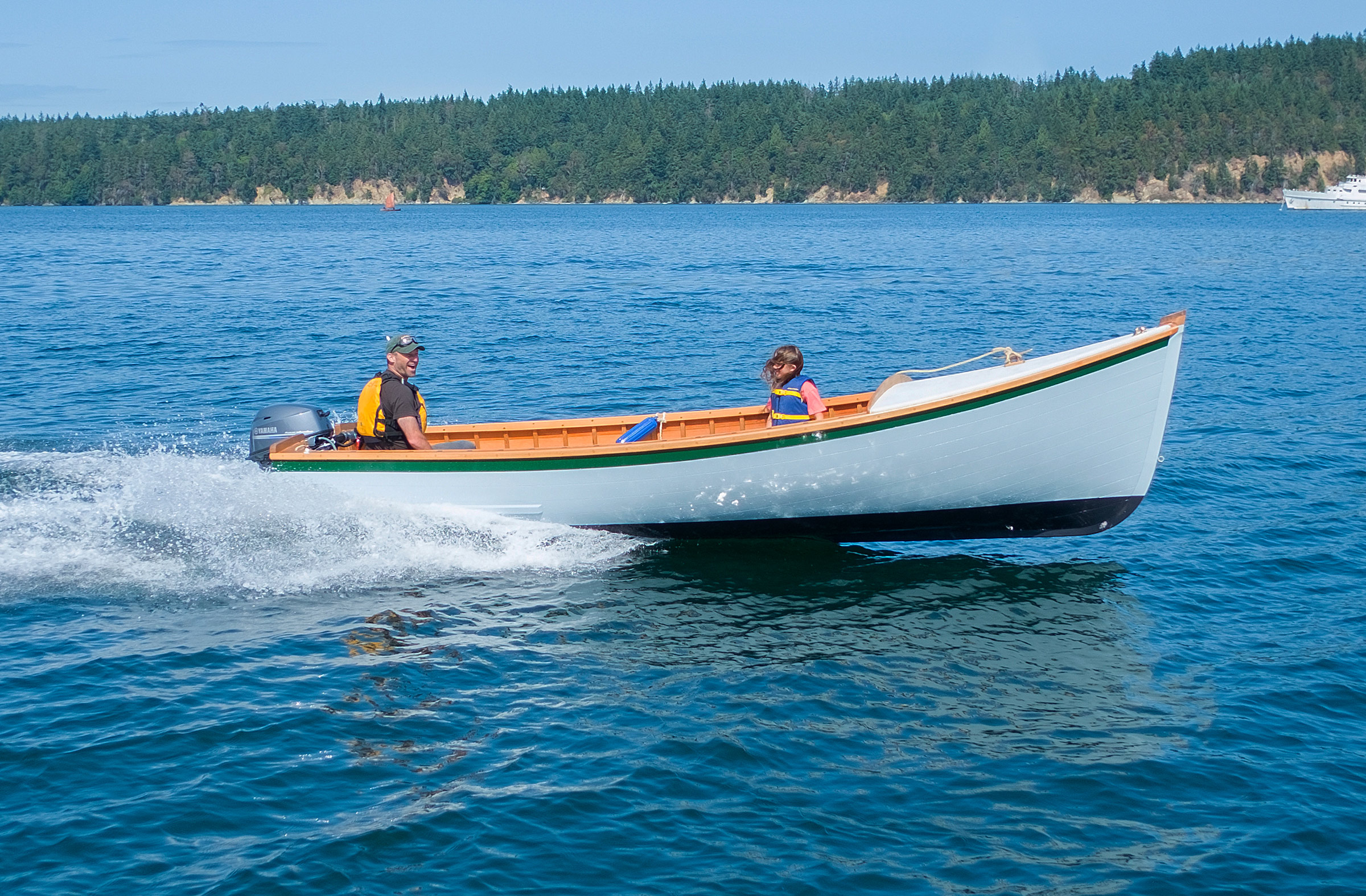 Steve Stanton
Steve StantonWith a 25-hp four stroke, the Workboat has a top speed of 15 knots.
I’ll use MOON LADY as a coastal cruiser throughout Puget Sound and the rest of the Salish Sea, while overnighting aboard as needed at anchor or at marinas. It’s a practical and safe boat for crabbing and fishing, as well. During the frequent light-wind periods of the summer months in Puget Sound, MOON LADY will tow my sailboat, an 18′ L. Francis Herreshoff Carpenter, thus extending that boat’s range in the Sound, the San Juan Islands, and even Canada’s Gulf Islands. With the workboat’s speed and interior space, it will do well as one of the support chase boats during the Salish 100 small-boat cruise in the summer on Puget Sound.
I never thought that one day I would be exploring Puget Sound with a boat meant for Maine, but thanks to the Northwest School of Wooden Boatbuilding, I have a Down East Workboat and look forward to many miles of pleasurable cruising. I heartily recommend this well-founded Gardner design. It’s an affordable and capable boat for protected coastal waters.![]()
Denis Wang lives in the Puget Sound coastal town of Port Hadlock, Washington, as a recent transplant from mid-coast Bayside, Maine. Now retired and actively engaged in small-craft boating and permaculture gardening as hobbies, he was a researcher in oceanography and marine ecology as well as a science department administrator and teacher at independent secondary schools in Colorado and on the East Coast. Denis has been an avid sailor in both large and small boats for most of his life and has been an officer in the Down East and Puget Sound chapters of the Traditional Small Craft Association. Recently, he has been a volunteer in helping to organize the Salish 100 cruises of the Northwest Maritime Center in Port Townsend.
Denis would like to thank the student builders at the Northwest School of Wooden Boatbuilding for their fine work: Bill Billingsley, Nick Dighiera, Brandon Adams, Sam Trocano, Alex Ashley, Gabriel Partridge, Bobby Ferrar, and K Woolfe. During the project, which spanned more than six months, four students, on average, were working on the boat at any given time.
Down East Workboat Particulars
Length/18′
Beam/6′ 4″
Inside depth amidships/2′ 9″
Drawings, offsets, construction details, and descriptions were originally included as a nine-page chapter, “Down East Workboat,” in John Gardner’s Building Classic Small Craft, Volume 2, published in 1984 and now out of print. A more recent edition, Building Classic Small Craft: Complete Plans and Instructions for 47 Boats, combines Volume 1 and Volume 2, and is available from The WoodenBoat Store for $40.
Is there a boat you’d like to know more about? Have you built one that you think other Small Boats Magazine readers would enjoy? Please email us!
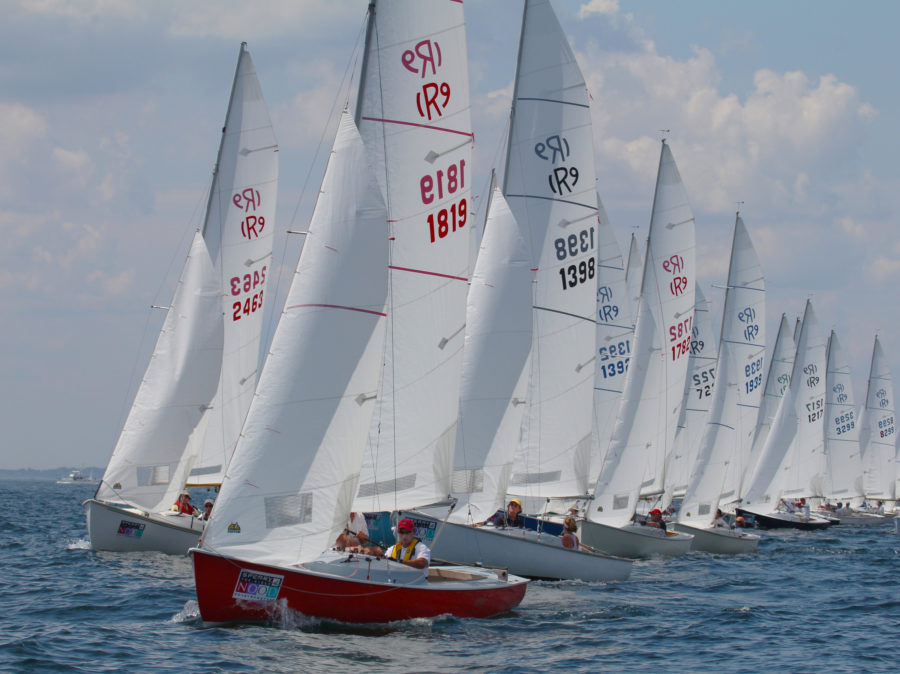
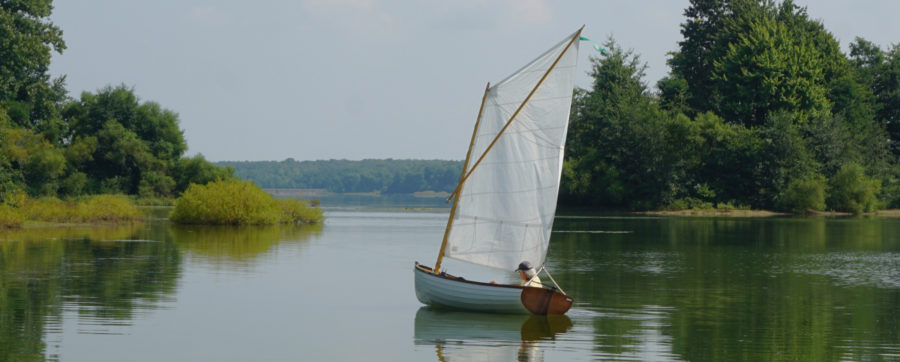
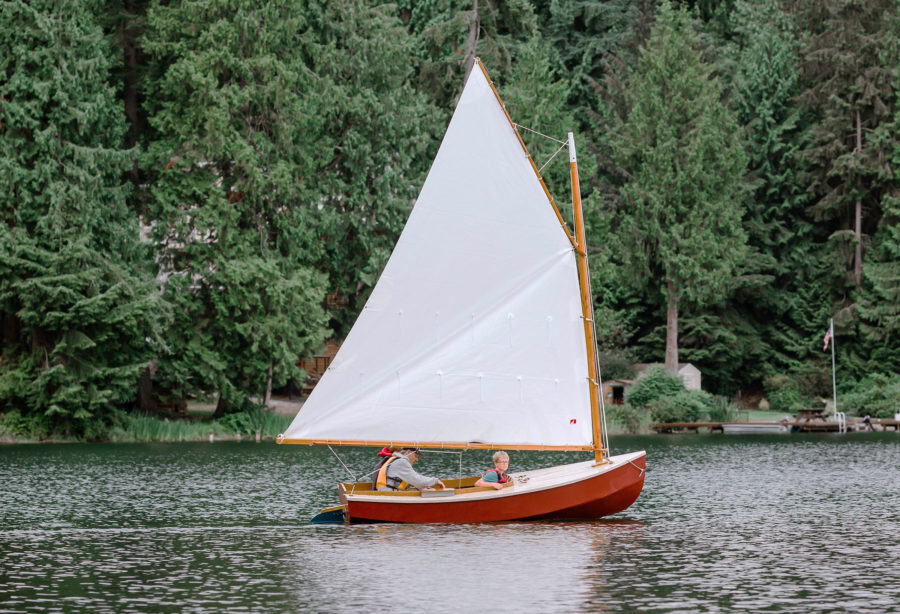
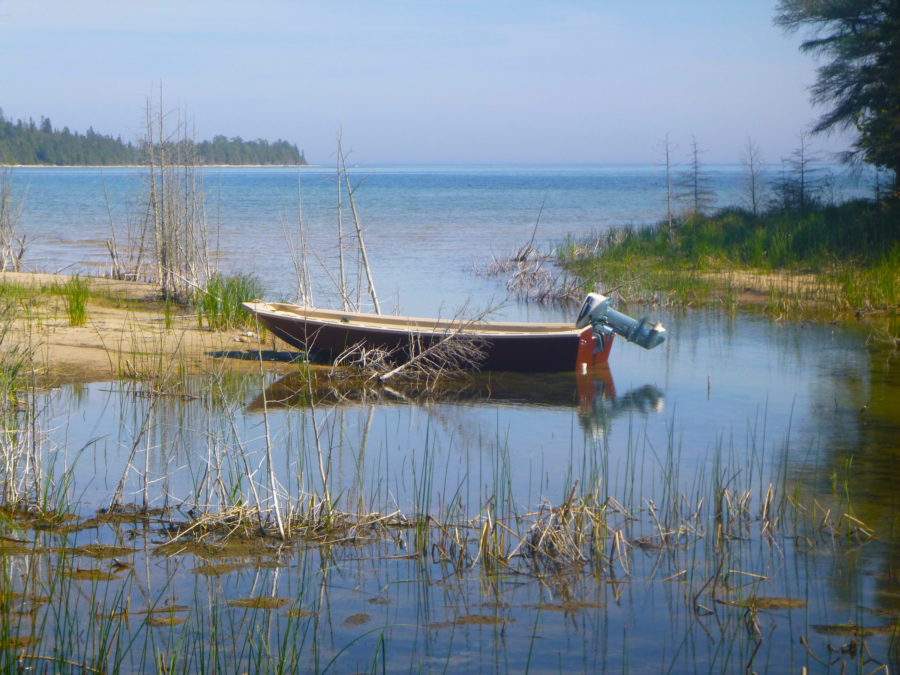
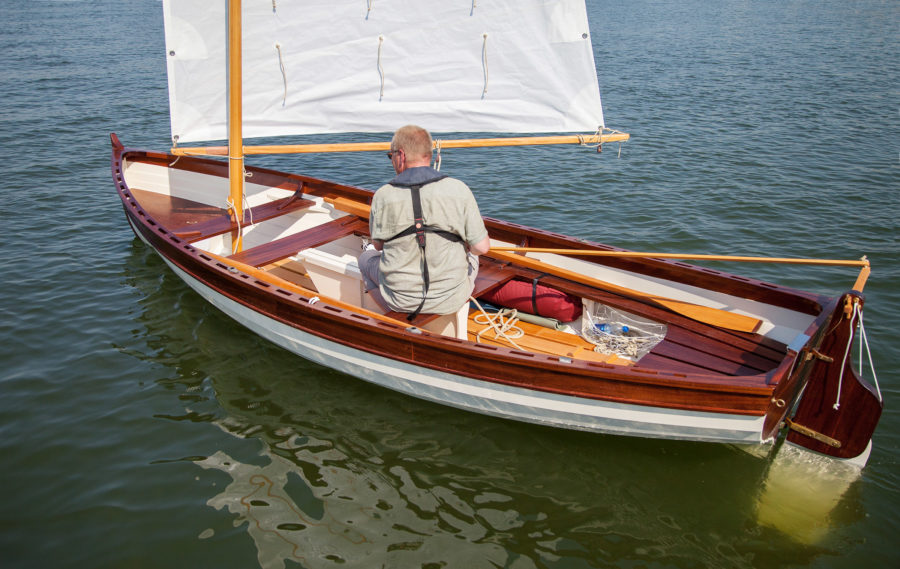
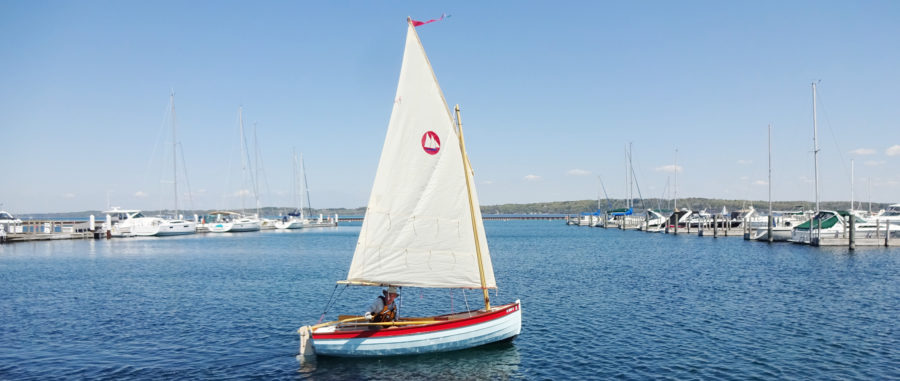
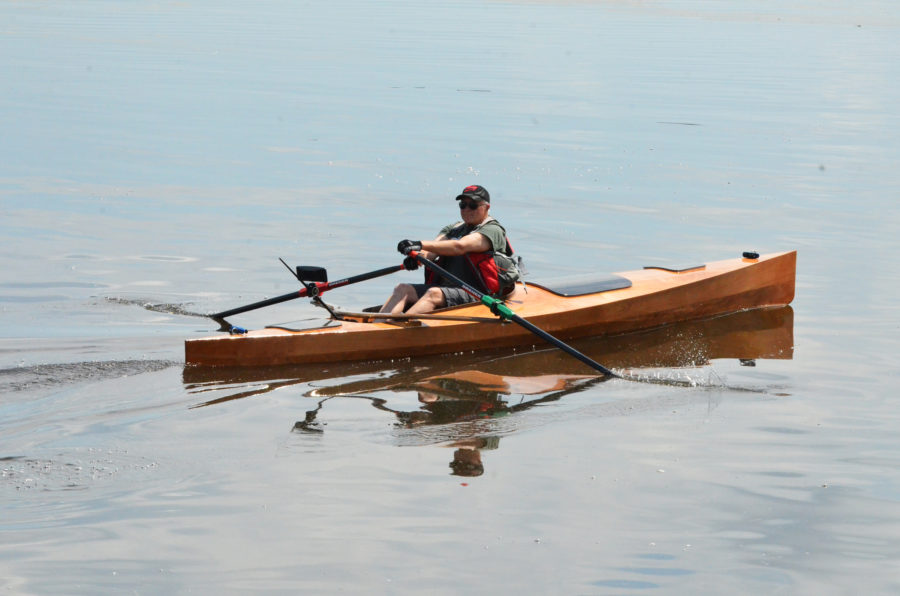
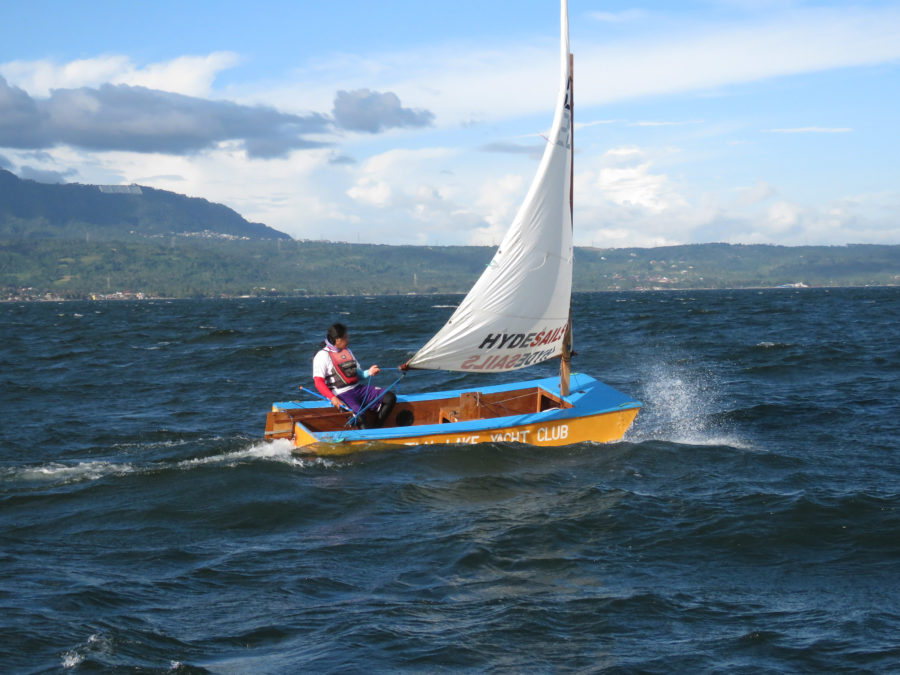
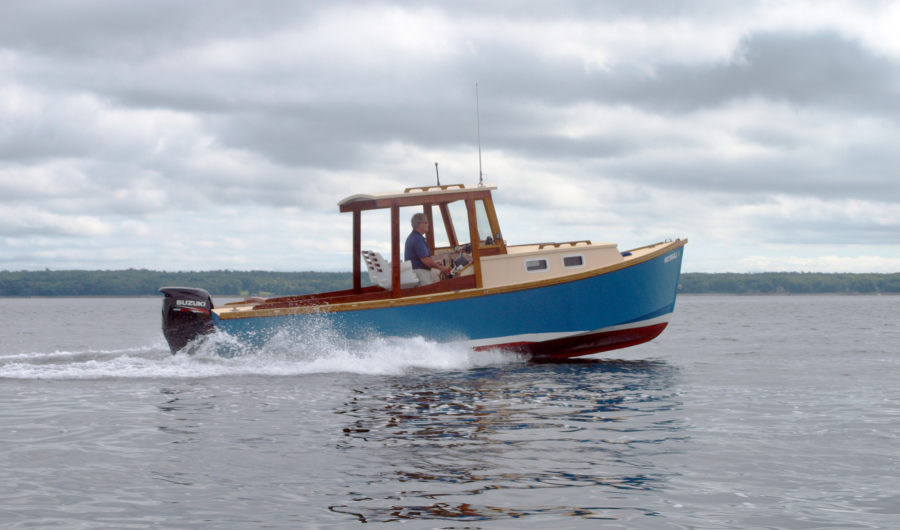
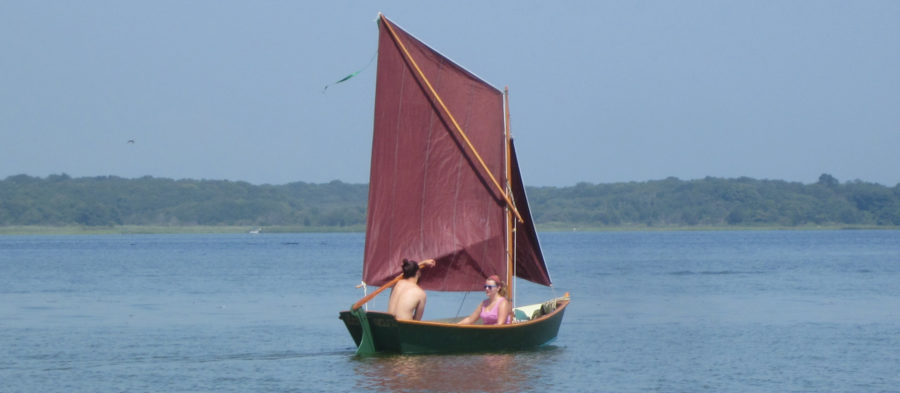
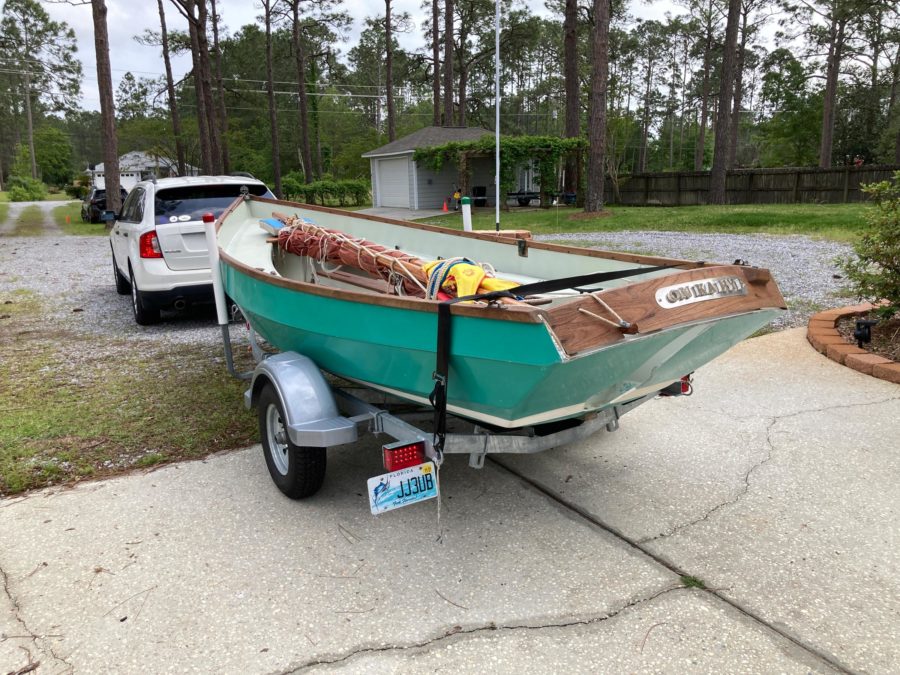
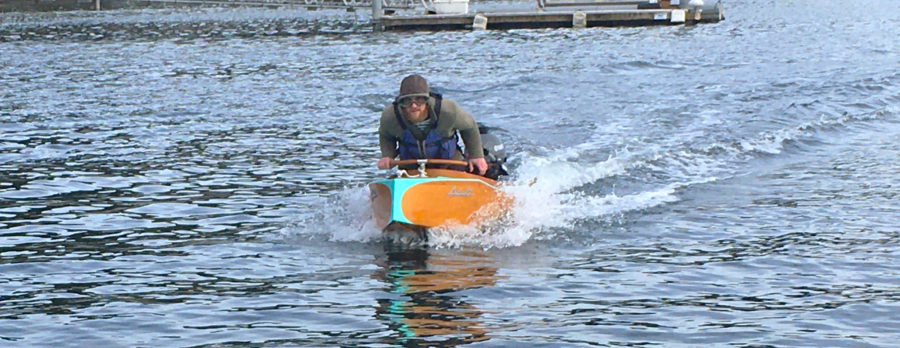
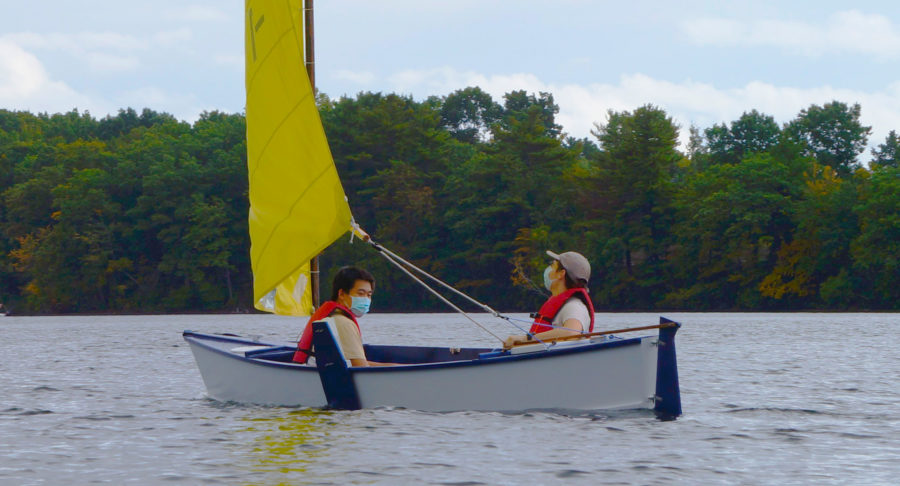
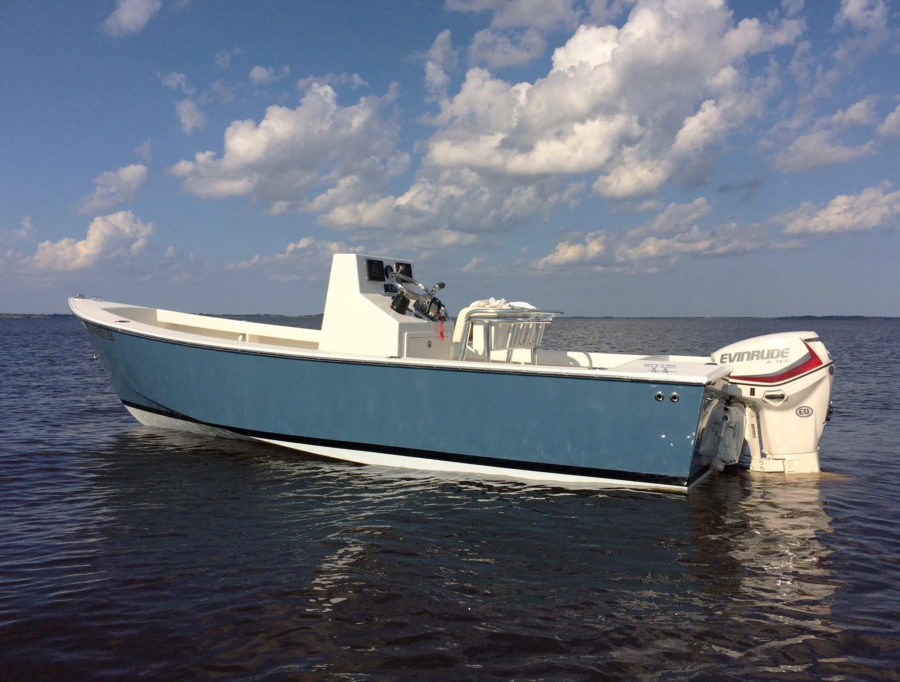
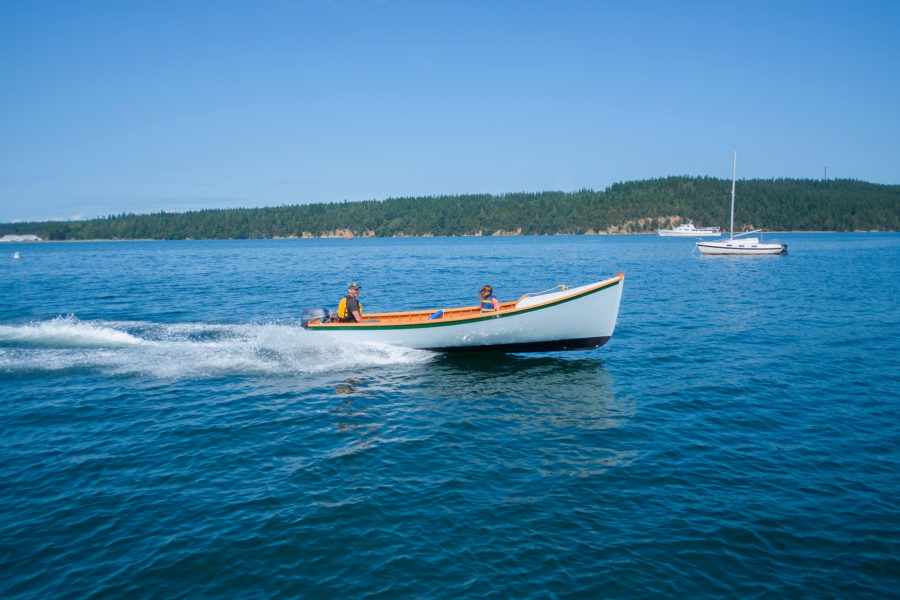
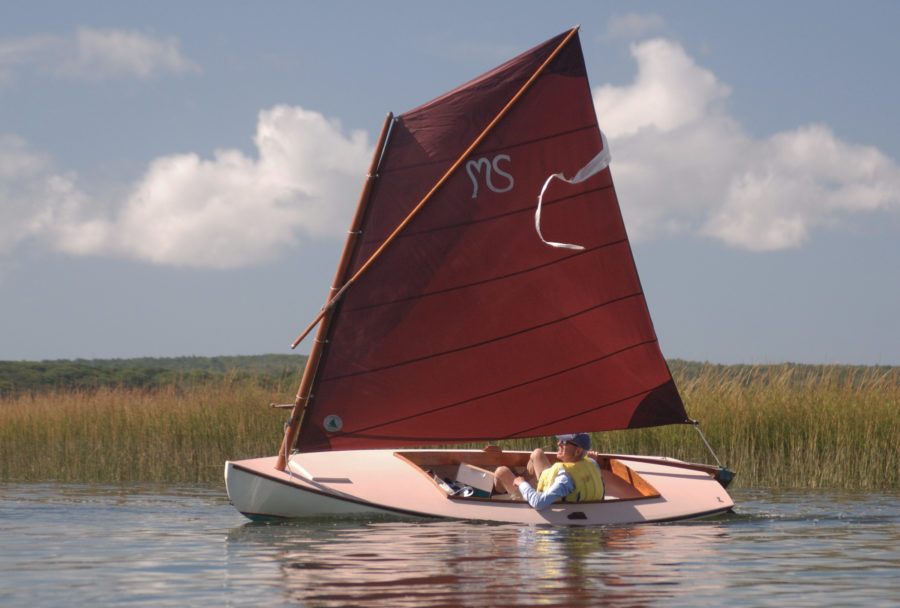
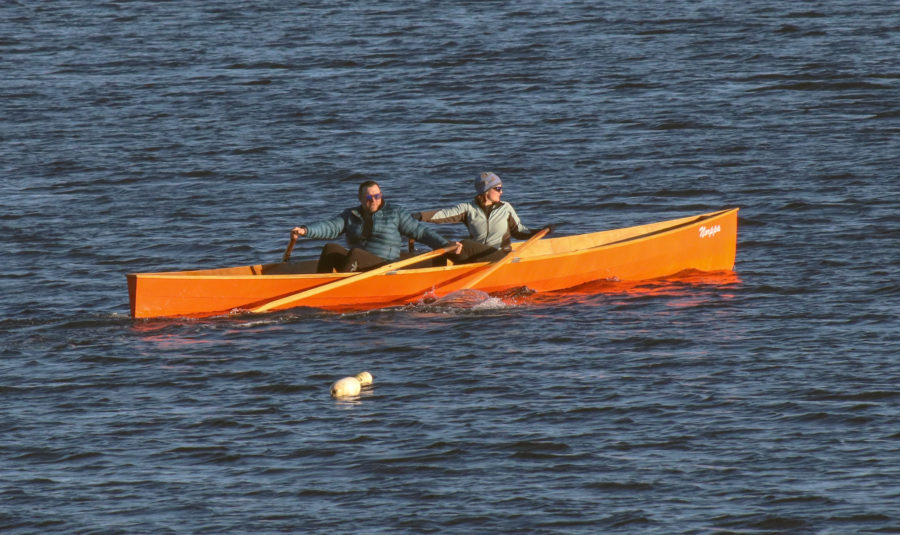
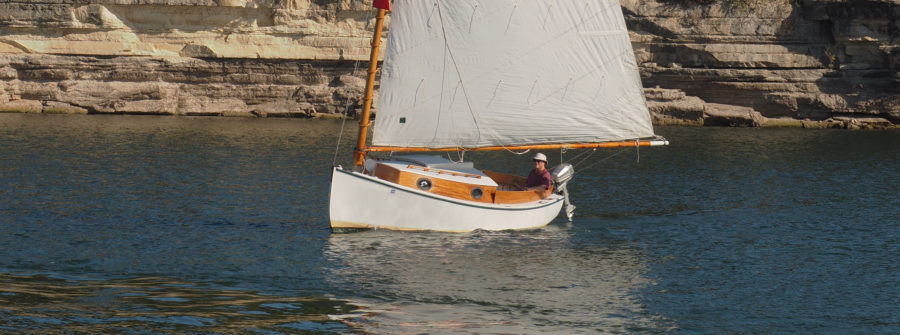
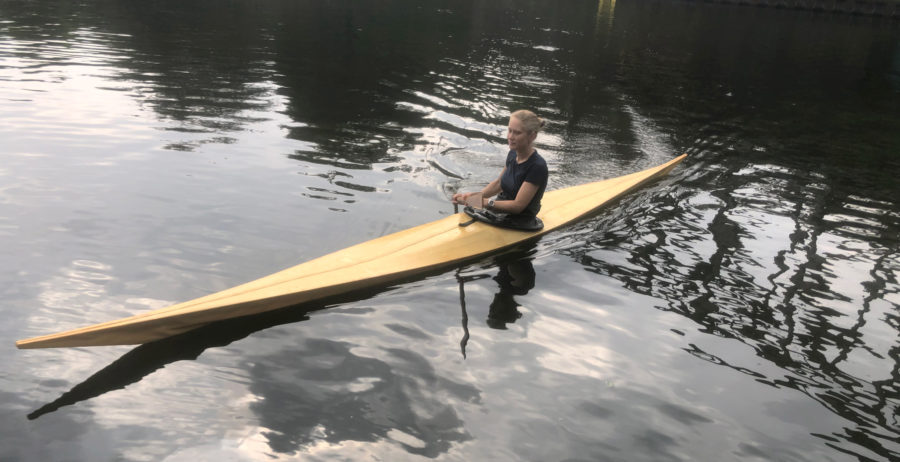
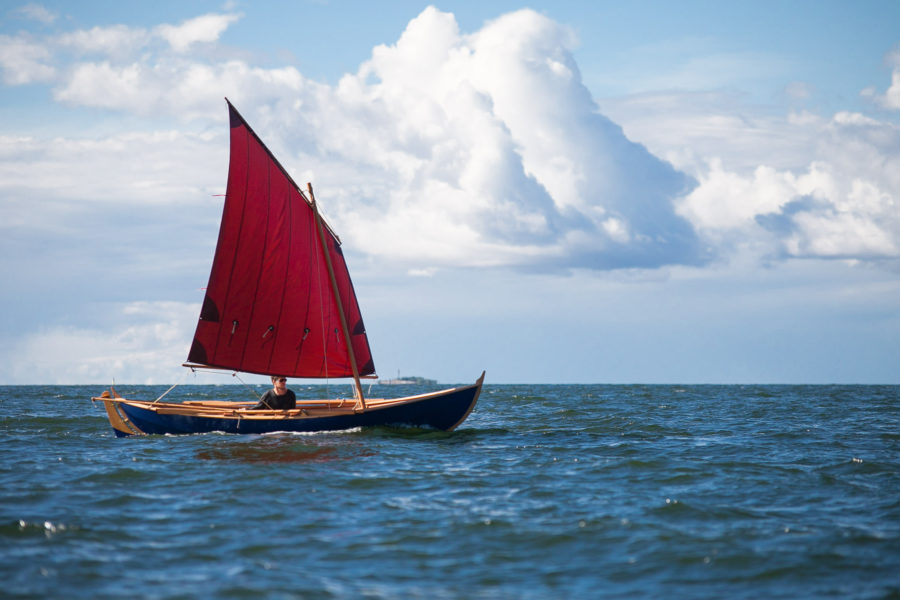
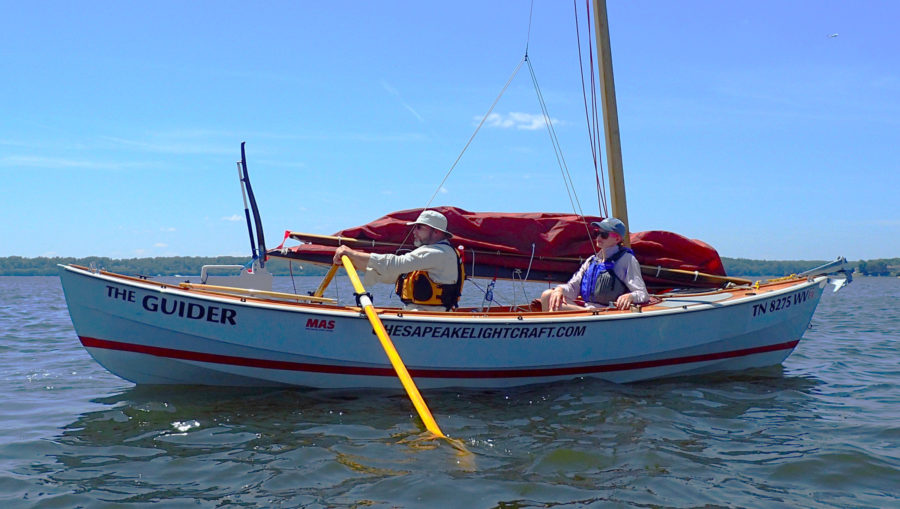
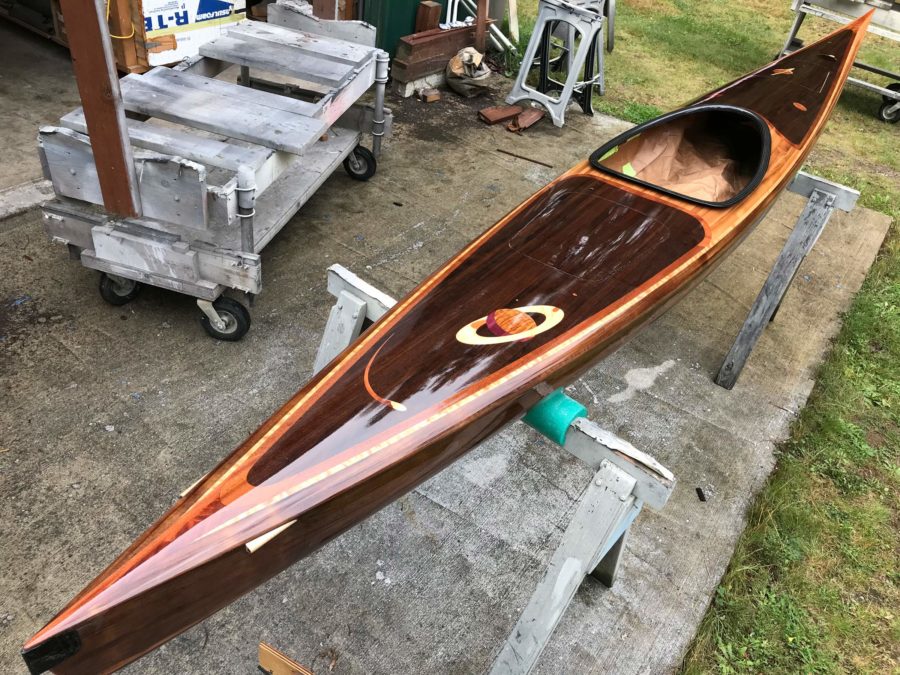
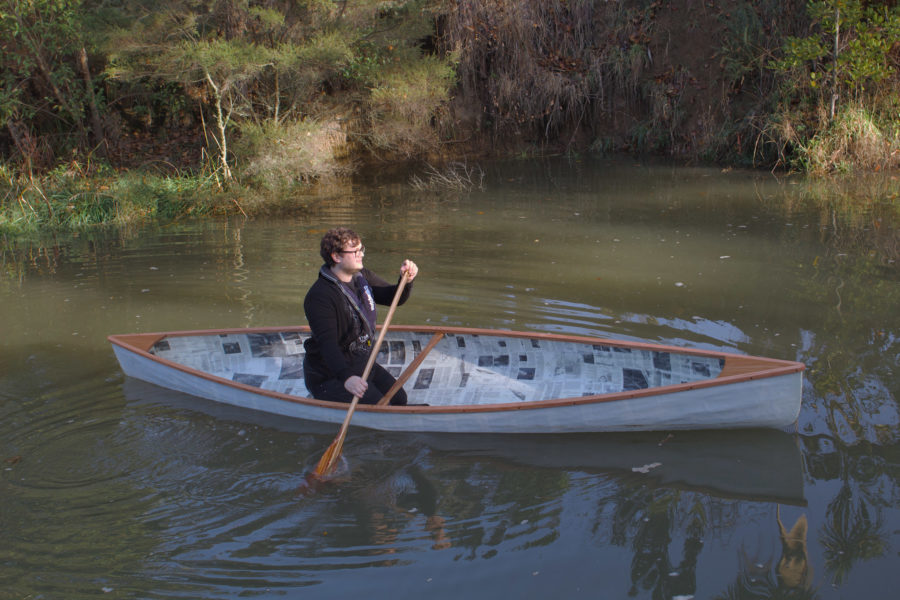
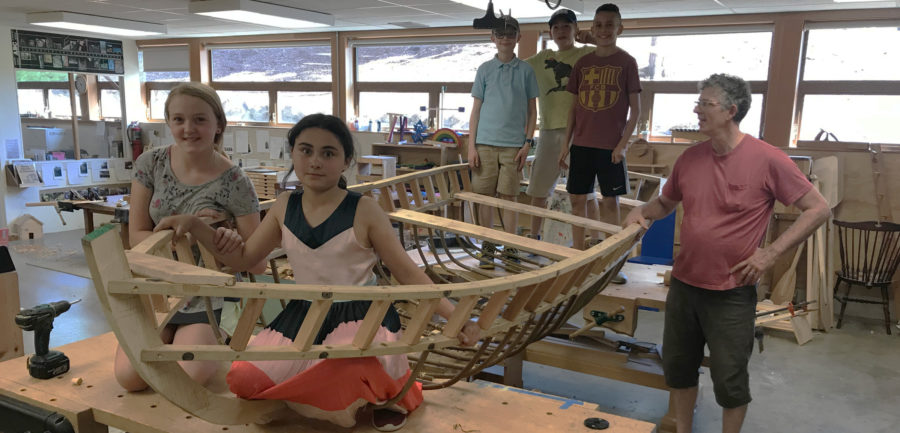
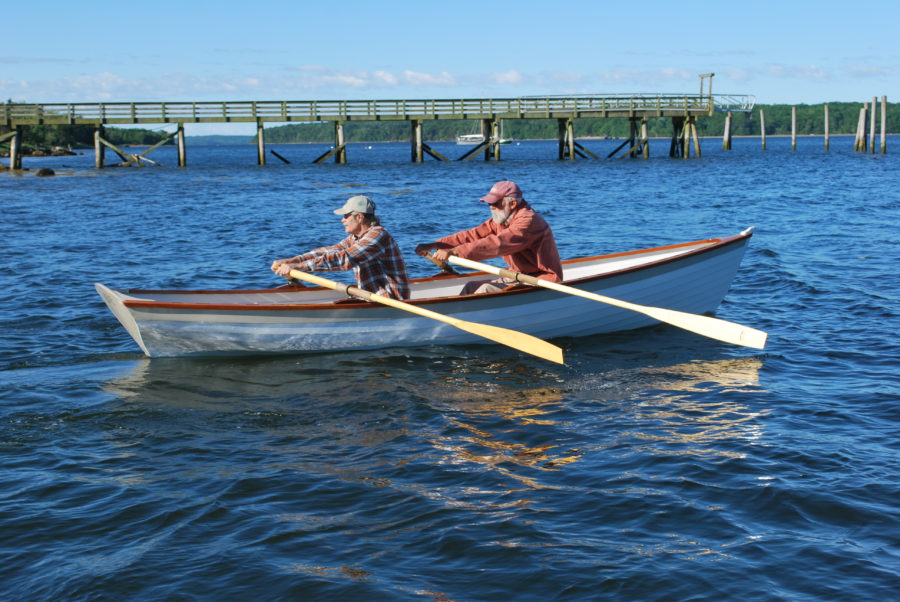

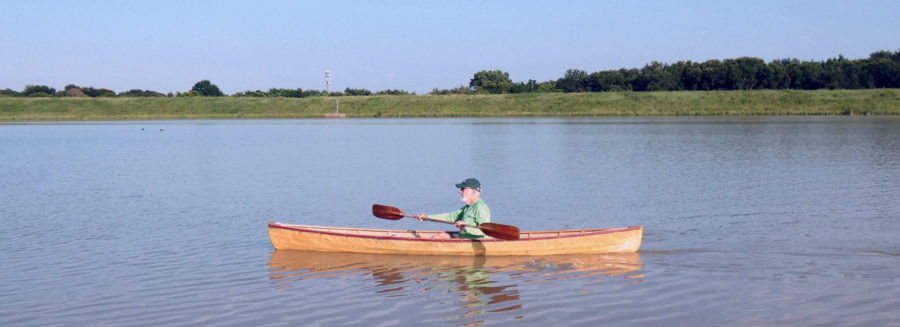
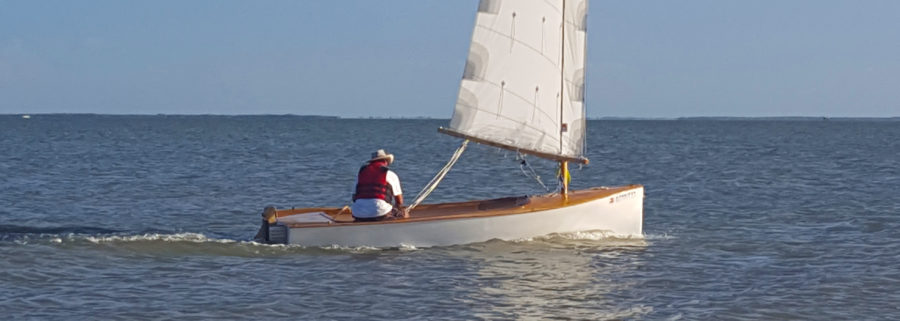
Beautiful Boat, Denis! Excellent choice. Such high workmanship!
Perfect boat for a chase boat for your Salish 100. We will miss you and your Carpenter at Small Reach Regattas. Enjoy the West Coast.
Bill Rutherford
Thanks Bill, I do miss the Small Reach Regatta in beautiful Maine and all you wonderful friends and mariners. We’ll finally get to repeat the Salish 100 this year after last year’s cancellation. Best to you and a safe and enjoyable, last SRR!
Denis,
I live in Sedgwick alongside Brooklin, Maine. I fished one of these Downeast work boats on Cape Cod and later Maine raising my family raking mussels, I eventual glassed the ol’ girl and later sold it to a man in need of her who lost his boat as I moved to a 37 Novi boat. I’m interested in building this boat just as yours but most likely painted as the old work boats were. I have a local wooden-boat builder who is going to do this for me and allow me in on the entire build. I’ve emailed NWSWB but they are closed for holidays. Not that my builder can’t loft or any other component of building ( he has built several beautiful working lobster boats) but anything to help in this process you can share is greatly appreciated. The build should start late summer when he’s completed the current boat in his shop. Once we get going, I can share builder name and construction pics/video but out of respect for builder I’ll leave that out for now.
Thank you in advance
When I first saw the photo of MOON LADY, I thought, wow, this would be an ideal boat. I was more than surprised when I realized that it was your boat, Denis! Congratulations! I’m jealous! Ditto what Bill Rutherford said in his comment. We do miss you here in Maine, and at the Small Reach Regatta. Enjoy your new boat! It’s gorgeous.
Thanks Paul, but I think that Carpenter II is a bit jealous. Yes, MOON LANDY is an ideal boat out here just as she would be in coastal Maine. As I said in the article, this new boat will be able to tow the Carpenter around for new adventures for the three of us. Best to you and the gang and have a great 2021 Small Reach Regatta!
I launched my version of the Downeast 18 in the spring of 2018. I used the same article from the book, and built it from half-inch cedar strips, covered outside with two layers of 6 oz. fiberglass cloth set in epoxy, and one layer on the inside. I don’t care for tumblehome, so brought the stern quarters straight up.
I built a cabin on the boat, with sleeping quarters in the fore, and a pilot house forward of the cockpit. This substantially increased the weight, so my 20hp Suzuki 4 stroke gave it a top speed of 10 knots, but I cruise at 5, and get about 15 nautical mpg.
Hi Barry Jensen,
Do you have any photos of your version? I’d be very interested in seeing them.
Years ago, I foolishly sold a boat much like the one in this article. I was told it was a Foley Boat and that they were built in Lubec for the sardine fishery. It was a great boat, especially when loaded down with gear. I’ve regretted selling it ever since and am considering a new build.
We are working with Barry on a Reader Built Boat feature that will have lots of photos of his boat and the story behind it. Stand by!
—Ed.
I believe i have a Foley boat—my dad had it built in 1968. Still in use, have a new 60 Yamaha on it now.
Wondering what the max HP/ weight of motor could be hung on the back of 18′ or 20′?
TIA
Funnily enough, I am currently building an extremely similar boat, but rather than a traditional plank-on-frame build, it’s a stitch-and-glue with about the same measurements—a little shorter so I could fit the build in my garage, but other than that, I started with a set of requirements very similar to this boat’s attributes, and ended up with a hard-chine version of almost the exact same thing. Mine is for the waters just north of Puget Sound. Interesting how similar two independently designed boats, made in very different ways, turned out to be so similar by virtue of selecting for low-power planing and a few other basic characteristics, right down to the sheer line.
Can you tell what the dead rise is for this boat? Is there any rocker. In the photos it appears quite flat. Thank you.
Does anyone know of a Down East workboat for sale in the Puget Sound area? I’d like to use one up here in Southeast Alaska.
Thanks,
Dave Turcott
Sitka, Alaska
This is a beautiful boat! Wonderfully designed and would be great for Florida waters where we live. I really like the deck arrangement with the cover on the front third of the hull. I think it makes it really seaworthy and the high transom as well gives protection. Great job!
Sincerely,
John Gatewood
Jacksonville Fla.